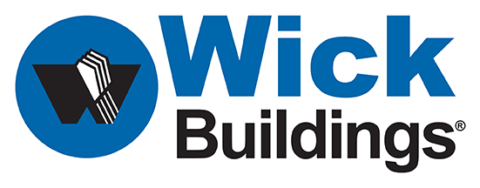
Company Profile:
Headquartered in Mazomanie, WI, Wick Buildings has been a trusted leader in post-frame construction since 1954. Founded by John F. Wick, the company became employee-owned in 2013 through an ESOP. Now celebrating its 70th anniversary, Wick has constructed over 75,000 buildings—making it one of the largest post-frame builders in the nation. While originally focused on agricultural structures, the company has successfully expanded into diverse markets with custom-engineered, high-quality buildings. With approximately 150 employee-owners, Wick continues to grow through innovation, craftsmanship, and outstanding service.
Situation:
Wick operated across an eight-building campus, with production spread out and disconnected—resulting in inefficiencies, excessive material handling, and limited scalability. To support long-term growth, leadership explored the development of a new, consolidated manufacturing facility on a greenfield site. Securing shareholder approval required a well-developed preliminary layout, accurate cost projections, and a compelling ROI case. Once approved, the plan would need to be refined to support Lean operations and future expansion.
Solutions:
WMEP partnered with Wick’s cross-functional team to design an initial facility layout that gained shareholder approval for the new site. After approval, WMEP led a comprehensive plant layout engagement, leveraging Lean principles to streamline flow and eliminate waste. The process included Lean training, Value Stream Mapping, and collaborative workshops to co-develop a future-state layout aligned with Wick’s operational goals and strategic growth plans. Currently, the new facility is under construction and expected to be fully operational by the end of 2025.
Results:
- Strategic Investment: Guided by the new facility layout, Wick Buildings invested $500,000 in advanced manufacturing equipment—driving modernization and positioning the company for sustained growth
- Measurable Payback: Lean-driven improvements are projected to cut costs by $50,000 annually, creating a strong return on investment.
- People-Powered Results: Increased efficiency and business momentum led to the retention of five skilled jobs—amplifying both economic and human resources impact.
I could not be more pleased with our experience with WMEP and our project. Having an outside perspective to help our team develop and implement strategies to improve workflow, system integration, and reduce costs was a game changer for us as we looked to build a new facility. The savings of time, energy and manpower will be incredible.